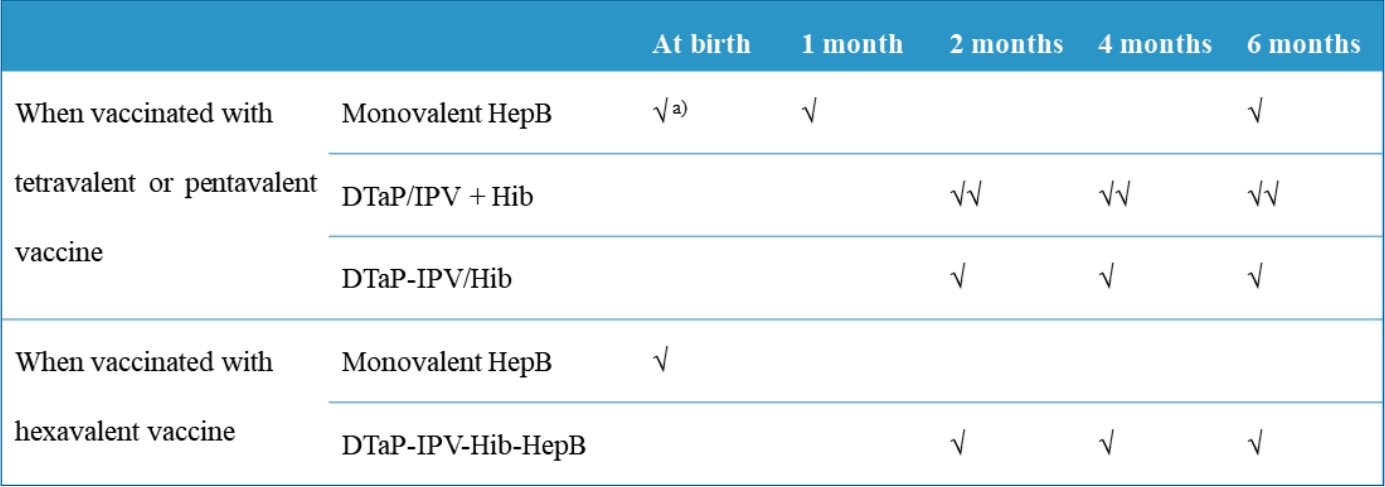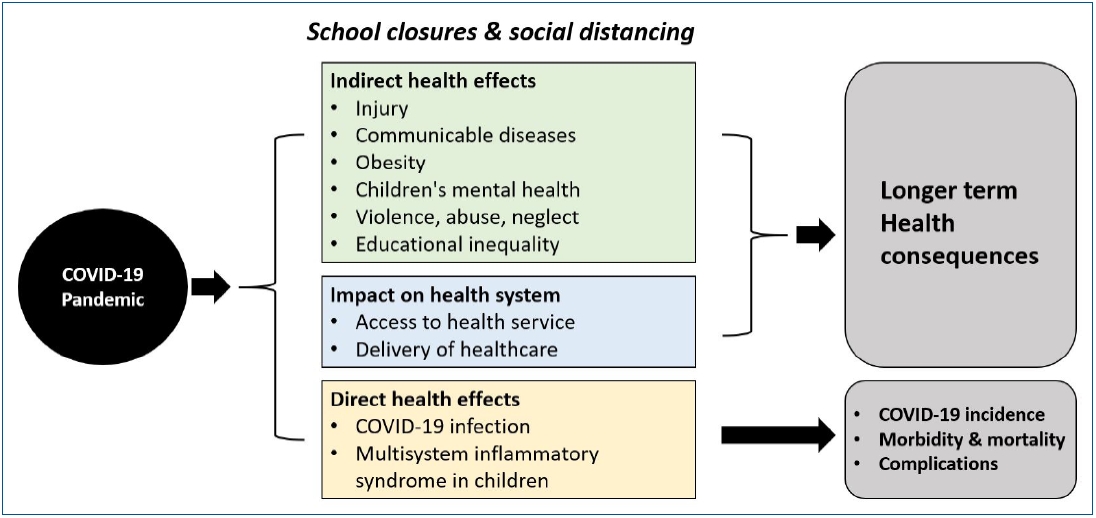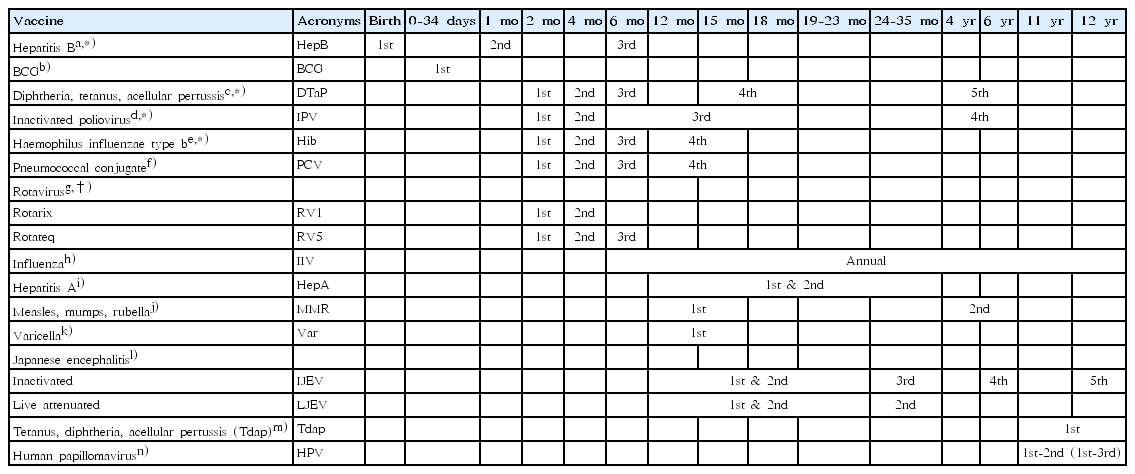Search
- Page Path
-
- HOME
- Search
- Perspective
- Infection
- Statement on healthcare system preparedness in response to COVID-19 Omicron subvariants BA.4 and BA.5 surge in Korea from the Korean Pediatric Society and Korean Society of Pediatric Infectious Diseases
- Eun Young Cho, Dong Hyun Kim, Soo-Han Choi, Ki Wook Yun, Jong Gyun Ahn, Hye-Kyung Cho, Hyunju Lee, Jina Lee, Taek-Jin Lee, Byung-Wook Eun, Jin Lee, Dae Sun Jo, Yun-Kyung Kim, Yae-Jean Kim; Committee on Infectious Diseases of the Korean Pediatric Society
- Clin Exp Pediatr. 2022;65(11):510-511. Published online September 23, 2022
-
In order to respond to the recent surge in coronavirus disease 2019 (COVID-19) cases and the continuously changing epidemiology of COVID-19, a sustainable and flexible pediatric healthcare system must be prepared considering the specificity of pediatric care. We demand a more proactive response from the health authorities to check the current state of pediatric COVID-19 patient care and to ensure that pediatric patients receive appropriate and timely management.
- Review Article
- Infection
- Recommendation for use of diphtheria and tetanus toxoids and acellular pertussis, inactivated poliovirus, Haemophilus influenzae type b conjugate, and hepatitis B vaccine in infants
- Hye-Kyung Cho, Su Eun Park, Yae-Jean Kim, Dae Sun Jo, Yun-Kyung Kim, Byung-Wook Eun, Taek-Jin Lee, Jina Lee, Hyunju Lee, Ki Hwan Kim, Eun Young Cho, Jong Gyun Ahn, Eun Hwa Choi; The Committee on Infectious Diseases of the Korean Pediatric Society
- Clin Exp Pediatr. 2021;64(12):602-607. Published online June 8, 2021
-

∙ Diphtheria and tetanus toxoids and acellular pertussis-inactivated poliovirus-Haemophilus influenzae type b-hepatitis B (DTaP-IPV-Hib-HepB) was licensed in Korea in April 2020.
∙ DTaP-IPV-Hib-HepB is indicated as a 3-dose primary series for infants aged 2, 4, and 6 months who received the standalone HepB vaccine at birth.
∙ Infants born to HepB surface antigen-positive mothers are currently recommended to be immunized with HepB immunoglobulin at birth and then monovalent HepB vaccine at 0, 1, and 6 months.
- School closures during the coronavirus disease 2019 outbreak
- Eun Young Cho, Young June Choe
- Clin Exp Pediatr. 2021;64(7):322-327. Published online May 31, 2021
-

· Earlier modeling studies of the effects of school closures on severe acute respiratory syndrome coronavirus 2 were largely derived from the pandemic influenza model, resulting in conflicting implications.
· Observational findings suggest no clear effect of school closures on community transmission or overall mortality.
· School closures must be weighed against potential high social costs, which can also negatively affect children’s health.
- Epidemiology and clinical features of coronavirus disease 2019 in children
- Soo-Han Choi, Han Wool Kim, Ji-Man Kang, Dong Hyun Kim, Eun Young Cho
- Clin Exp Pediatr. 2020;63(4):125-132. Published online April 6, 2020
-

Coronavirus disease-2019 (COVID-19), which started in Wuhan, China, in December 2019 and declared a worldwide pandemic on March 11, 2020, is a novel infectious disease that causes respiratory illness and death. Pediatric COVID-19 accounts for a small percentage of patients and is often milder than that in adults; however, it can progress to severe disease in some cases. Even neonates...
- Recommended immunization schedule for children and adolescents: Committee on Infectious Diseases of the Korean Pediatric Society, 2018
- Eun Hwa Choi, Su Eun Park, Yae-Jean Kim, Dae Sun Jo, Yun-Kyung Kim, Byung-Wook Eun, Taek-Jin Lee, Jina Lee, Hyunju Lee, Ki Hwan Kim, Hye-Kyung Cho, Eun Young Cho, Jong-Hyun Kim
- Clin Exp Pediatr. 2019;62(7):252-256. Published online July 15, 2019
-

The Committee on Infectious Diseases of the Korean Pediatric Society recommended immunization schedule for children and adolescents aged 18 years or younger in the 9th (2018) edition of Immunization guideline. This report provides the revised recommendations made by the committee and summarizes several changes from the 2015 guideline. National immunization program (NIP) launched a human papillomavirus (HPV) immunization for girls...
- Original Article
- Association between Kawasaki disease and acute respiratory viral infections
- Eun Young Cho, Byung Wook Eun, Nam Hee Kim, Jina Lee, Eun Hwa Choi, Hoan Jong Lee, Jung Yun Choi
- Clin Exp Pediatr. 2009;52(11):1241-1248. Published online November 15, 2009
-
Purpose : The etiology of Kawasaki disease (KD) is still unknown. Recently, an association between human coronavirus NL63 (HCoV-NL63) and KD was implicated. Hence, we attempted to determine the association between KD and acute respiratory viral infections. Methods : Nasopharyngeal aspirate samples were obtained from 54 patients diagnosed with KD at the Seoul National University (SNU) Children’s Hospital and SNU-Bundang Hospital... -
- Predictive factors for severe infection among febrile infants younger than three months of age
- Eun Young Cho, Hwa Song, Ae Suk Kim, Sun Ju Lee, Dong Seok Lee, Doo Kwun Kim, Sung Min Choi, Kwan Lee, Byoung Chan Park
- Clin Exp Pediatr. 2009;52(8):898-903. Published online August 15, 2009
-
Purpose:This study investigated the predictive factors for identifying infection-prone febrile infants younger than three months. Methods:We conducted a retrospective study of 167 infants younger than three months with an axillary temperature >38℃ who were hospitalized between 2006 and 2008. If they met any of the following criteria, positive blood culture, CSF WBC ≥ 11/mm3 or positive CSF culture, urinalysis WBC ≥6/HPF and positive... -
- Case Report
- A Case of Congenital Nephrogenic Diabetes Insipidus Confirmed by Gene Analysis
- Eun Young Cho, Jin Hee Oh, Dae Kyun Koh
- Clin Exp Pediatr. 2005;48(6):669-674. Published online June 15, 2005
-
Nephrogenic diabetes insipidus (NDI) is a disorder in which the secretion of antidiuretic hormone is normal, but the response of the renal collecting tubules to vasopressin is impaired. Compared with acquired NDI (a-NDI), which is secondary to chronic bilateral incomplete urinary tract obstruction with hydronephrosis, congenital NDI (c-NDI) is a very rare heritable disorder that usually follows the X- linked... -
- Original Article
- Epidemiological Study of Kawasaki Disease in Kyung Nam Area
- Jeong Soo Yang, Eun Young Cho, Hae Sung Jung, Ji Young Hwang, Dong-Jin Lee, Eun Suk No, Myoung-Bum Choi, Chan-Hoo Park, Hee-Shang Youn, Hyang-Ok Woo
- Clin Exp Pediatr. 2002;45(7):896-901. Published online July 15, 2002
-
Purpose : The aim of this study was to determine the epidemiology of Kawasaki disease in the Kyung Nam area and to evaluate whether the results of this epidemiological study could support infectious etiology. Methods : We sent a questionnaire to three training hospitals in the Kyung Nam area and retrospectively reviewed their medical records of Kawasaki disease from Jun.... -
- Aseptic Meningitis in 1991 - isolation of causative agent -
- Yoon Ah Park, Eun Young Cho, Ki Soo Kim, Young Seo Park, Hyung Nam Moon, Chang Yee Hong
- Clin Exp Pediatr. 1993;36(4):506-511. Published online April 15, 1993
-
To know the causative agent of asptic meningitis, we performed blood and cerebrospinal fluid study on 24 children who had been admitted to the department of Pediatrics, Asan Medical Reference Laboratory, Japan. The most of the patients were young infants, and 15 cases of them were under 3 months of age. The male to female ratio was 1:1.4. We observed the main symptoms... -
- Influenza Epidemic in the Pediatric Patients in Seoul 1991
- Hyun Mi Kim, Se Ho Oh, Eun Young Cho, Ki Soo Kim, Young Seo Park, Hyung Nam Moon, Chang Yee Hong, Young Suhn Kim, Kee Duk Park
- Clin Exp Pediatr. 1993;36(3):379-385. Published online March 15, 1993
-
Influenza virus culture was performed in 149 patients with influenza-like illness who were admitted or visited to the Department of Pediatrics, Asan Medical Center from january 1991 to March,1991. The results were as follows : 1) Of the total 149 patients, influenza virus were isolated in the 15 cases. : 15 isolates were characterized by the WHO Collaborating Center for influenza : 7... -
- Hepatic Rickets in Infancy with Neonatal Hepatitis
- Mi Koo Kang, Eun Young Cho, Soo Jong Hong, Ki Soo Kim, Young Seo Park, Hyung Nam Moon, Chang Yee Hong
- Clin Exp Pediatr. 1992;35(4):527-533. Published online April 15, 1992
-
We had treated a hepatic rickets in 6 infants with neonatal hepatitis from June 1989 to August 1990 at Asan Medical Center. The results were as follows 1) Age of 6 patients were below 4 months and 4 patients were male, 2 patients were female. 2) The clinical findings were hepatosplenomegaly(5 cases), jaundice(4 cases), craniotabes (4 cases), failure to thrive(2 cases), hypocalcemiac seizure(2... -
- Treatment of Kawasaki Disease with Single High-dose Intravenous Gammaglobulin
- Mi Koo Kang, Eun Young Cho, Young Hwue Kim, Ki Soo Kim, Young Seo Park, In Sook Park, Hyung Nam Moon, Chang Yee Hong
- Clin Exp Pediatr. 1992;35(3):342-348. Published online March 15, 1992
-
Kawasaki disease is an acute febrile illness of unknown origin and most frequently affects infants and children under 5 years of age. Coronary aneurysms are the most serious complications and 15-20% of patient develop coronary aneurysm. We studied 50 children who wre diagnosed as Kawasaki disease and treated simultaneously with single high-dose gammaglobulin (2 gm/kg/day) and aspirin at Asan Medical Canter... -
- Epidemics of aseptic meningitis in Seoul area during 1989-90.
- Eun young Cho, Mi Koo Kang, Soo Jong Hong, Ki Soo Kim, Young Seo Park, In Sook Park, Hyung Nam Moon, Chang Yee Hong
- Clin Exp Pediatr. 1991;34(11):1565-1572. Published online November 30, 1991
-
We performed clinical and virological studies on 200 children with aseptic meningitis who had been admitted to the department of Pediatrics, Asan Medical Center from June, 1989 to August, 1990. The results were as follows; 1) There were total of 236 meningitis cases during this period, 13(5.5%) with bacterial meningitis, 3(1%) with tuberculous meningitis, 220(93.2%) with aseptic meningitis. Am이lg aseptic meningitis, 20(8.5%) were mumps meningitis. 2) Aseptic meningitis... -
-

-
-

-

-
Impact Factor3.2
-
8.02023CiteScore94nd percentilePowered by







